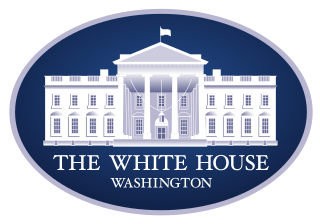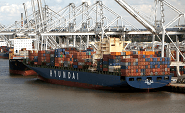Trade Cases

US to Temporarily Lift Section 232 Tariffs from Ukrainian Steel
Written by Michael Cowden
May 9, 2022
The US will for one year lift Section 232 tariffs from Ukrainian steel, the Commerce Department said.
The move is necessary to support Ukraine in its war against Russia and because steel plays an outsized role in the Ukrainian economy, Commerce said in a press release on Monday, May 9.
![]() Case in point: Steel employs one in 13 Ukrainians, the department said.
Case in point: Steel employs one in 13 Ukrainians, the department said.
“We can’t just admire the fortitude and spirit of the Ukrainian people – we need to have their backs and support one of the most important industries to Ukraine’s economic well-being,” Commerce Secretary Gina Raimondo said.
“For steel mills to continue as an economic lifeline for the people of Ukraine, they must be able to export their steel,” she added.
The move was not unexpected. US lawmakers on both sides of the aisle asked last month that the Biden administration ease Section 232 tariffs on Ukrainian steel.
Also, industry participants and trade policy experts had said that a temporary easing of Section 232 was in the works. And some have said the tariff suspension could be extended should the war with Russia drag on.
Most said that the impact on the North American steel market would be modest. Some SMU sources noted, for example, that they had previously imported steel plate from Azovstal in Mariupol, Ukraine. The city has been razed by Russian forces, and Azovstal, now a makeshift fortress, has become symbolic of Ukrainian resistance. But the mill has been all but destroyed in the fighting, and no plate is being exported from there or will be anytime soon.
Other steel products, given the difficulties of shipping via the Black Sea, will likely be exported to the European Union via train or truck. One exception might be energy tubulars such as oil country tubular goods (OCTG). Much of Ukraine’s production has been exported to the Middle East. But that situation on the Black Sea makes that logistically difficult, sources said. A portion of that OCTG production might be re-directed from customers in the Middle East to those in North America. It could be taken overland to Gdansk, a port city in Poland, and then exported to the US, they said.
Ukraine exported 130,636 metric tons of steel products to the US in 2021, according to Commerce Department figures. The bulk of those exports – 113,101.9 metric tons, or 86.6% – were pipe and tube. Only 9,705.7 metric tons, or 7.4%, were flat-rolled products, almost all of it cut-to-length plate or coiled plate.
Recall that Section 232 tariffs, 25% in the case of steel, were initially rolled out by the Trump administration in 2018. They have been kept largely in place by the Biden adminstration, although tariff-rate quota (TRQ) agreements to ease them have since been negotiated with the European Union, Japan and the United Kingdom.
By Michael Cowden, Michael@SteelMarketUpdate.com

Michael Cowden
Read more from Michael CowdenLatest in Trade Cases

Trump signs executive order aimed at making US shipbuilding ‘great again’
President Trump on Wednesday signed an executive order meant to breathe new life into American shipbuilding and curb Chinese dominance in the sector.

Trump still against selling USS to Japanese firm: Report
Despite ordering a new review of Nippon Steel’s bid for U.S. Steel, President Trump said he is still against selling USS to a Japanese company, according to media reports.

CRU: ‘Liberation Day’ brings sweeping US tariffs
For trading partners, the tariffs will reduce demand for exports and depress growth. Over the coming days, trade partners will almost certainly announce retaliation, which will hit US exports.

Leibowitz: The blowback from Trump’s ‘Liberation Day’ tariffs has only just begun
Tariffs are taxes that the government collects. Funds are disbursed by acts of Congress. If domestic companies, including manufacturers, are to benefit from “protective” tariffs, they must raise their prices as well. Maybe not by the entire amount of the tariffs, but by some. Inflation will come.

Supply chains, end-users brace for impact from tariffs
Supply chains are working through what the tariffs mean for them
